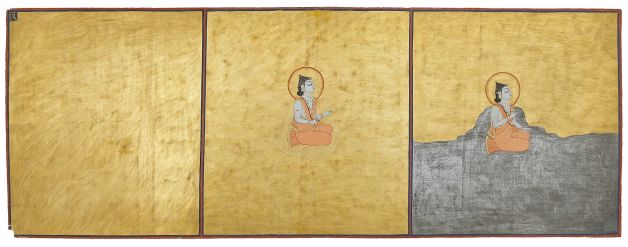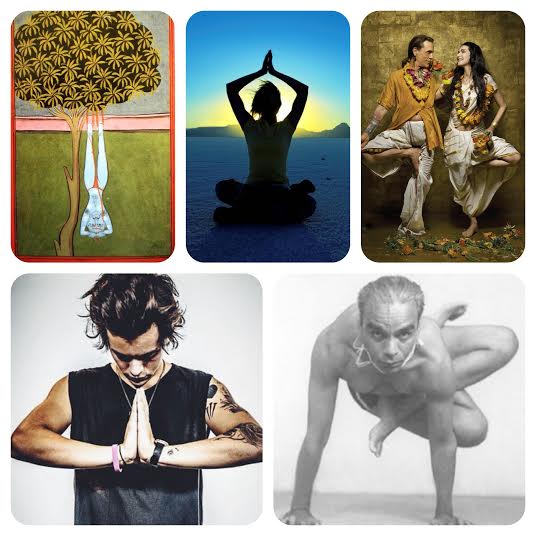Yoga has fully seeped into our popular consciousness, it seems. And yet, do we even understand what it is? Is it even possible to understand something as ancient, ever-changing, and influential as this wide-reaching set of practices? Even in its far more recent contexts, there is still a rich and complicated history. In the West, yoga was once the fringe interest of a handful of bohemians, but is now a full blown obsession, complete with scandals, Lululemon and controversy, not to mention millions of practitioners. Sufi mystics like Rumi were describing ecstatic states of being in the 1200s and Vivekananda introduced Vedantic philosophies to the Western world in the late 1800s (with devotees such as J.D. Salinger). Today health insurance companies cover yoga as a therapy for heart disease, schools teach meditation, non-profits use yoga as a means to serve disadvantaged youth and soldiers use it to manage combat stress. Clearly, something about yoga has power, profound relevance and longevity. The ancient philosophies at the root of yoga have influenced The Beatles, Transcendentalists, Rudolph Steiner's Anthroposophy, the hunky lead singer of One Direction, and probably you or someone you know.
Perhaps it's not just yoga's ability to shift according to the era or its participants, but also the possibilities of personal interpretation present in a practice deeply grounded in something far grander. A part of the wide ranging appeal is no doubt that it's a physical way to get to the mind, and perhaps even beyond it, if we're lucky. We all have a body, an experience of living inside it and a desire to understand what that means. Yoga is the mirror; that's why it can change, because everything does. In the Vedas, an ancient collection of Sanskrit hymns, we hear, "The truth is one. The wise call it by many names." Yoga, despite how dramatically different it might look now than it did in Patanjali's time, is still about that truth. And therein lies its appeal.

In keeping with yoga's popularity, there arrives the world's first major art exhibit on the subject, Yoga: The Art of Transformation, now up at San Francisco's Asian Art Museum through May 21, 2014. Transformation couldn't be a more perfect word, both to describe the experiences of yoga, but also to describe the practice itself as it has changed over the course of thousands of years, passed down through various branches of teachings, and reinterpreted around the entire world. In the midst of a popular culture wild about yoga, and with sometimes opposing and always passionate points of view about the modern Western versions, this gorgeous exhibit is a good place to start (or continue) considering its myriad aspects through a rich and compelling visual history.
According to Julian Raby, director of the Arthur M. Sackler Gallery and the Freer Gallery of Art, the show, "does not define a singular yoga or determine authenticity. Rather it aspires to enrich dialogue and inspire further learning about yoga's profound traditions and enduring relevance." And for those of us in the West who are drawn to this practice for our countless reasons, this further learning seems a necessary and important endeavor. The show's scope in and of itself points to the vastness of yoga's countless incarnations, beginning in India thousands of years ago and transforming itself time and time again. The work ranges from the 2nd to the 20th century, including intricate depictions of Vishnu with universes inside his head, statues of whistling yoginis riding owls and Thomas Edison's 1902 "trick film" Hindoo Fakir. I left the exhibit awe-struck by how a system of thought from so long ago strikes such a deeply resonant chord today, how something with such ancient roots can still be so alive.

The image most of us have of yoga is that of a postural practice, one full of headstands performed in cute leggings. And yet, there is little mention of headstands or cute leggings in any ancient texts. Mark Singleton, author of Yoga Body wrote a fascinating article about the similarity between modern day yoga and that of a 20th century Danish exercise system called Primitive Gymnastics. Yoga has traveled and shifted and hybridized in ways even more complicated than we might imagine, he tells us. Singleton speaks beautifully to the conclusions he drew from his research and says, "Thinking about yoga this way, as a vast and ancient tree with many roots and branches, is not a betrayal of authentic "tradition," nor does it encourage an uncritical acceptance of everything that calls itself "yoga," no matter how absurd. On the contrary, this kind of thinking can encourage us to examine our own practices and beliefs more closely, to see them in relation to our own past as well as to our ancient heritage."


